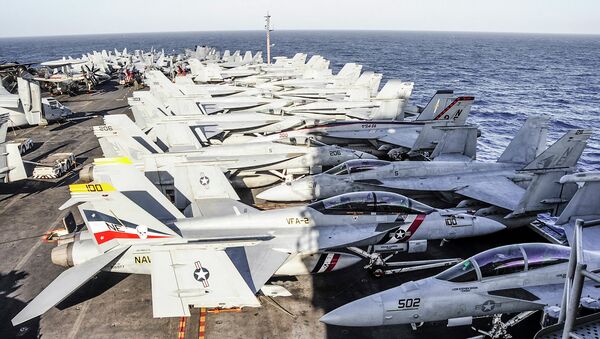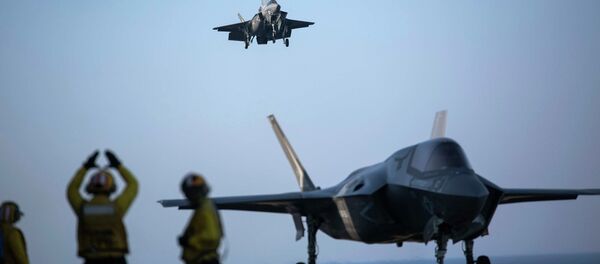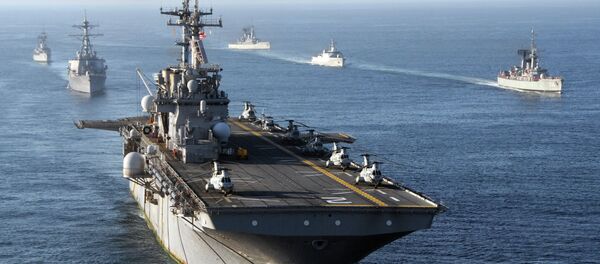Over the past few years, US Navy carriers have seen heavy operational use. Like any mechanical device, many of these ships are long overdue for extensive maintenance checks, and rumors have been circulating that the US military could sustain a carrier-gap in the Middle East as soon as this fall as it overhauls its fleet.
"The increased frequency and extension of carrier strike group deployments in previous years increased wear on the force, which led to increased maintenance and repair requirements and lengthened maintenance availability periods," Navy spokesman Lt. Tim Hawkins told Military.com
Some have expressed concern over the timing of such a drawdown, given the Navy’s role in conducting airstrikes against the self-proclaimed Islamic State terrorists.
Lt. Tim Hawkins indicated that while certain parts of the world will see fewer US aircraft carriers in its waters, the Navy will, overall, increase its presence globally.
"Although the Navy is not scheduled to provide a continuous carrier presence in fiscal year 2016 in some regions, we actually expect the global presence of aircraft carriers to increase," Hawkins said. "It’s also important to keep in mind that military leaders continually review force requirements and adjust global force management plans accordingly."
Hawkins did not indicate if the Middle East would be one of those regions soon to experience a decrease.

"The Navy will continue to meet Department of Defense global requirements. If there is a hotspot or emerging situation, we will be there. We acknowledged that we would need to recover readiness in subsequent years. So this is what we’re doing today," he said.
To aid in this boosted naval presence, the Pentagon expects the USS Ford to be ready next year.
In May, US Navy Secretary Ray Malbus announced that the Pentagon would build over 300 new vessels by 2020.
Mabus’ announcement also indicated that the Navy would shift at least 60% of its fleet to the Pacific. This followed a statement released by the US Defense Department in April.
"The newest and most capable weapons systems will go first to the [Asia-Pacific] region," the statement read. "When movements are completed…60 percent of the US fleet will be in the Pacific-Indian Ocean area."
This has been viewed by some as a response to an alleged Chinese threat. Beijing’s construction of artificial islands in the South China Sea has raised US concerns about a rebalance of power in the region, and it has been participating in a number of military exercises with Pacific allies.






